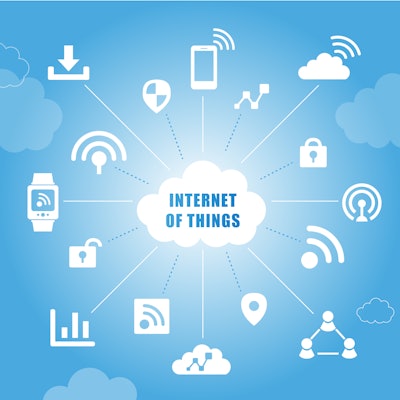
What does the Internet of Things mean for your company? Hype aside, it is now commonly held that we are entering a new era where digital smarts will be embedded in everyday devices from the clothes we wear to our cars to the lights in our homes, all interconnected by the Internet. What should your company do to prepare for these changes? What should you do individually to help your company succeed? And what are companies doing now that might need to change, if their IoT initiatives are to be successful?
The economic impact of all this new intelligence, connectivity, and insight is expected to be significant — we estimate up to $6 trillion globally by 2020, driven by more than 30 billion deployed interconnected devices. More than 30 percent of this value will consist of improved productivity, and another 60 percent will be the redistribution of revenues amongst existing and new players. In addition, close to $370 billion in incremental new revenues will be generated by the sale of IoT hardware, software, and services.
But the enormous potential of IoT will not simply appear, fully formed. It will evolve in fits and starts, with plenty of impediments. When you’re considering participating in the developing IoT economy — and nobody can afford not to — you need to know how to do so effectively. Here are three guiding principles:
When it comes to solutions, stay specific and focused. With such big opportunities and broad options, many companies, struggling to make a choice and going for “and” rather than “or” when investing in IoT, try to do too much. Instead, look at the specific developments that affect your situation, whether it is a solution for increased manufacturing productivity or one to increase sales force effectiveness, and understand how it can create value (cut costs, improve customer experience, reflect positively on your brand).Staying specific will cut time to value for both the companies and their customers and will pave the way for true IoT ubiquity, which will develop only through an aggregation of focused and specific solutions.
Know your ecosystem and how it’s changing. It is not unusual for established enterprises to define their ecosystem too narrowly — limiting it to immediate suppliers, channels, and customers. While in the past it might have been okay to do that, with IoT it will be bordering on suicidal. So again, companies that understand that each and every one of these solutions will inevitably consist of a medley of different components — sensors, devices, communication protocols, software, and services, for starters — that will most likely be provided by a collection of companies across the IoT ecosystem will benefit.
We cannot expect any true comprehensive solution to emerge until an ecosystem develops with standardized platforms and interfaces, intelligent government policies and regulations, and collaborative models where many companies collaborate — a tall order, however you look at it. But it also means that ground rules are still being set for how models will function, offering another opportunity for those on the front line to envision these models. Most important will be getting in early. For example, a home insurance company may want to participate in defining how home sensors will connect to a “hub” and how different pieces of data are captured and processed — or risk having those standards defined by its competitors, either existing or new.
Change your approach. We all know how much we, as consumers, love new technologies and products. So do most companies. But the old adage “build it and they will come” is practiced too reflexively and too often these days. For most companies, this approach will no longer work. For those on the front lines pushing their companies to think and act differently will be crucial, because that’s where success lies: by focusing on the clear business value of a potential solution, embracing strategic and operational flexibility as a way of life, and driving superior innovation that overcomes natural hesitations and biases. In short, success in the IoT will require experimentation and innovation with purpose.
Most established enterprises are still struggling with this, but just look at how automotive companies are moving in the connected car space — they’re establishing venture arms and incubation centers in Silicon Valley; or how many startups experiment in real time, improvising solutions based on customers’ feedback and on the real-time experience of having the products already in the marketplace. Take a look at the rapid evolution of Tesla and Nest. Tesla released an entirely new type of a car, collecting data on usage and performance, and continues to release upgrades and new features to the existing-in-the-market automobiles. Nest, on the other hand, put the initial product into customer hands and released dozens product updates since then, with close to two thirds of those updates providing new functionality.
Of the three principles, this one — being flexible to changing your approach — will be the most difficult to stick with consistently, but it will also have the most impact.
Taken together, these three ground rules encourage companies to seek out talent that can operate effectively in a rapidly evolving and highly uncertain environment — these are people who understand more than one industry, who are synthesizers and integrators at the core, and are user-oriented solution developers. These are the skills that will be of highest value to any enterprise that wants to stake a claim on the IoT space.
These principles also amount to nothing short of changing one’s operating model and investment profile in profound ways. Most companies have begun the journey, however tentatively, and many are struggling to execute effectively. What about yours?
Alex Blanter is a partner at A.T. Kearney.
To read more manufacturing and technology news, sign up for our newsletter. You can also follow Manufacturing Business Technology on Twitter @MBTwebsite.























